Cuba, a captivating island nestled in the Caribbean Sea, offers travelers a chance to step back in time and immerse themselves in rich history and vibrant culture. With its recent reemergence onto the global stage, Cuba has become an alluring destination for US citizens seeking an exotic and enchanting getaway.
Throughout its history, Cuba has experienced various influences, from indigenous tribes to Spanish colonialism and the rise of a socialist republic. This complex past has shaped the unique blend of cultures and traditions that make Cuba an extraordinary melting pot of experiences.
In this article, we seek to highlight why Cuba must be the first name on your list of must visit destinations around the world. Particularly if you are an American who wishes only to travel to exotic places around the globe.
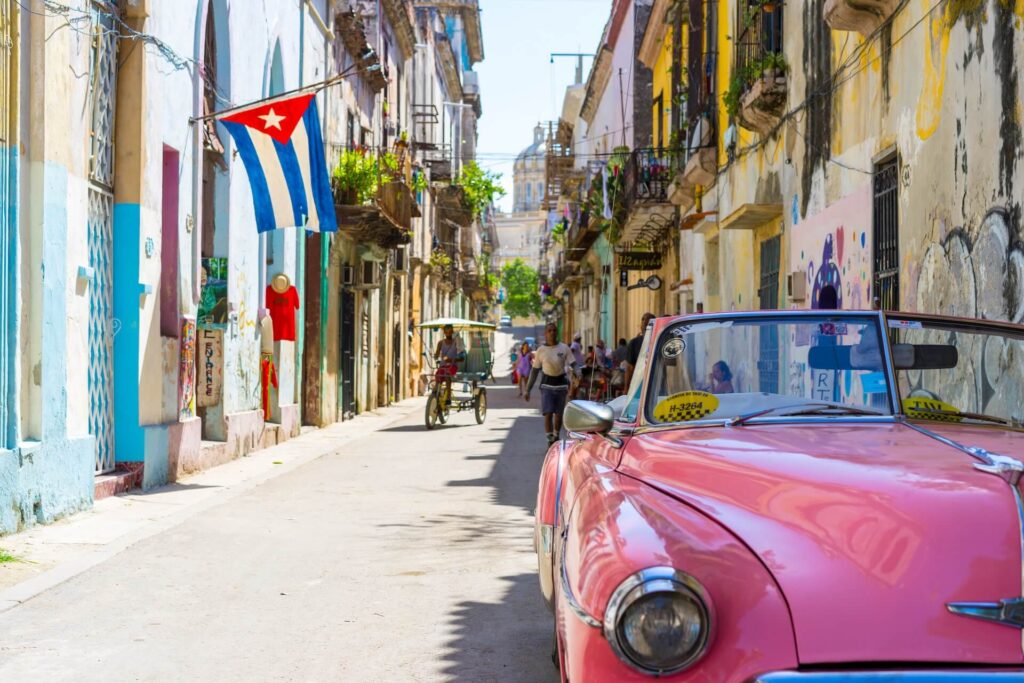
The Resurgence of Cuba: An Alluring Destination
After decades of strained relations between the United States and Cuba, recent changes have opened the doors for US citizens to rediscover this captivating island. With its untouched landscapes, vibrant cities, and warm people, Cuba has once again become an alluring destination for those seeking an unforgettable adventure.
Even though the size of these wanderlusters is so small, it is common to see airconditioned buses packed to the rafters with tourist exploring the city or exclusive restaurants maxing out their reservations all thanks to foreigners, particularly those from the United States who come in looking to explore this exotic location.
Cuba has since undergone an extreme reformation that has given the whole country a face lift, subtle changes such as prostitute brothels being converted to child-care centers to major penalties related to offences against foreigners. All targeted at making the country a safer place for tourist.
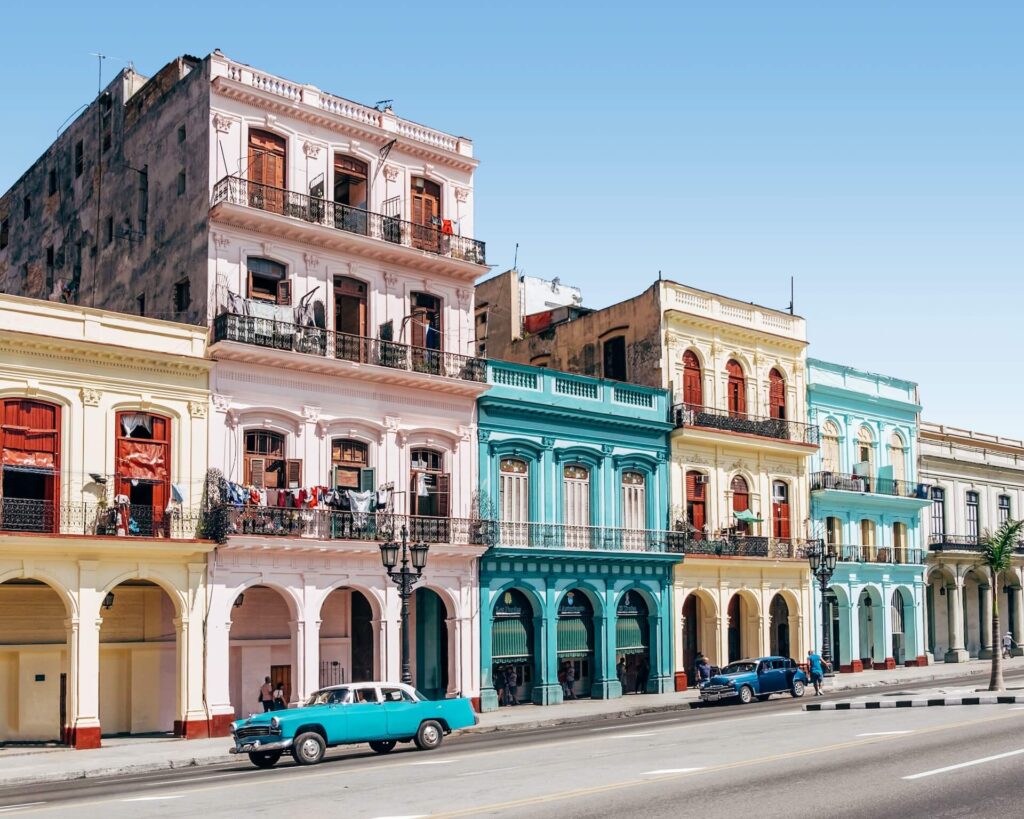
Understanding the Current Relation between the US and Cuba
As a US citizen planning a trip to Cuba, it’s essential to have a comprehensive understanding of the current relationship between the two countries. Let’s delve into the history of the embargo and explore the recent changes that have had a significant impact on travel.
The US embargo on Cuba, which began in the early 1960s, imposed strict economic and travel restrictions. For decades, US citizens were unable to freely visit the island, resulting in a sense of mystique surrounding Cuba. Despite recent improvements in diplomatic relations, certain restrictions and regulations still exist.
Recent Changes: Impact on Travel
In recent years, the US government has made several changes to facilitate travel to Cuba. While the embargo remains in place, certain categories such as family visits, education, and professional research have been authorized for US citizens. It is now easier than ever to explore the enchanting landscapes and vibrant cities of Cuba.
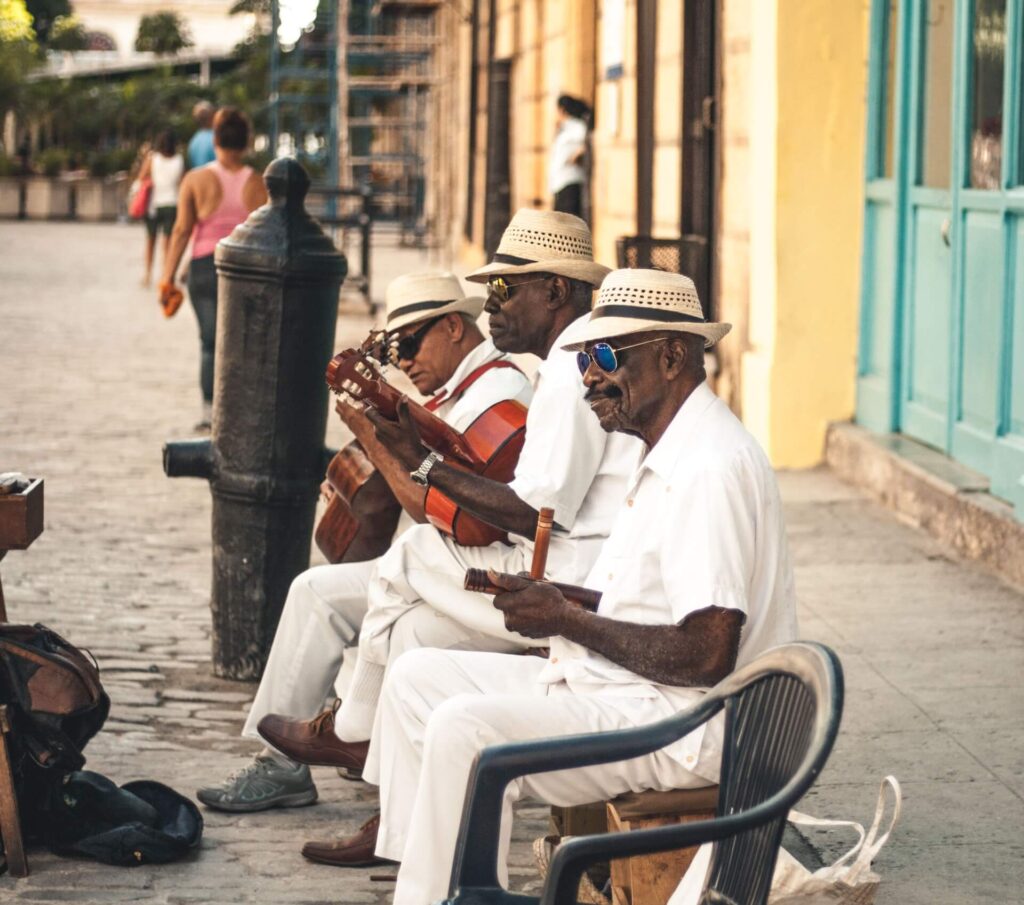
Essential Preparations for US Citizens
Before embarking on your journey to Cuba, it is crucial to ensure you have all the necessary travel documents and are well-prepared for your adventure.
Overview of Required Travel Documents
To visit Cuba as a US citizen, you will need a valid passport and a visa. The visa application process can sometimes be intricate, but with proper guidance, it can be navigated smoothly. It is important to plan in advance and ensure you have all the required documentation and approvals.
Navigating the Visa Process
The visa process for US citizens traveling to Cuba can be navigated in different ways. The most common method is to obtain a General License, which falls under one of the approved travel categories. Additionally, you may choose to arrange your visa through a third-party travel agency or the Cuban embassy. Each method has its own requirements and procedures.

Health and Travel Insurance Considerations
Prior to traveling to Cuba, it is important to understand the healthcare system in the country and take the necessary precautions. While Cuba boasts excellent medical facilities, it is advisable to have comprehensive travel insurance that covers any potential medical emergencies or unexpected situations.
Exploring Cuba’s Exquisite Cities
Cuba is home to a myriad of exquisite cities that offer a glimpse into its vibrant culture, historic heritage, and architectural wonders. Let’s embark on a journey through some of the most captivating cities in the country.
The Magnificence of Havana
As the capital of Cuba, Havana is a city overflowing with charm, energy, and an intoxicating blend of history and modernity. A UNESCO World Heritage Site, Old Havana takes visitors on a journey through centuries of captivating history. Its cobblestone streets, colorful facades, and well-preserved colonial architecture allow travelers to witness the splendor of a bygone era.
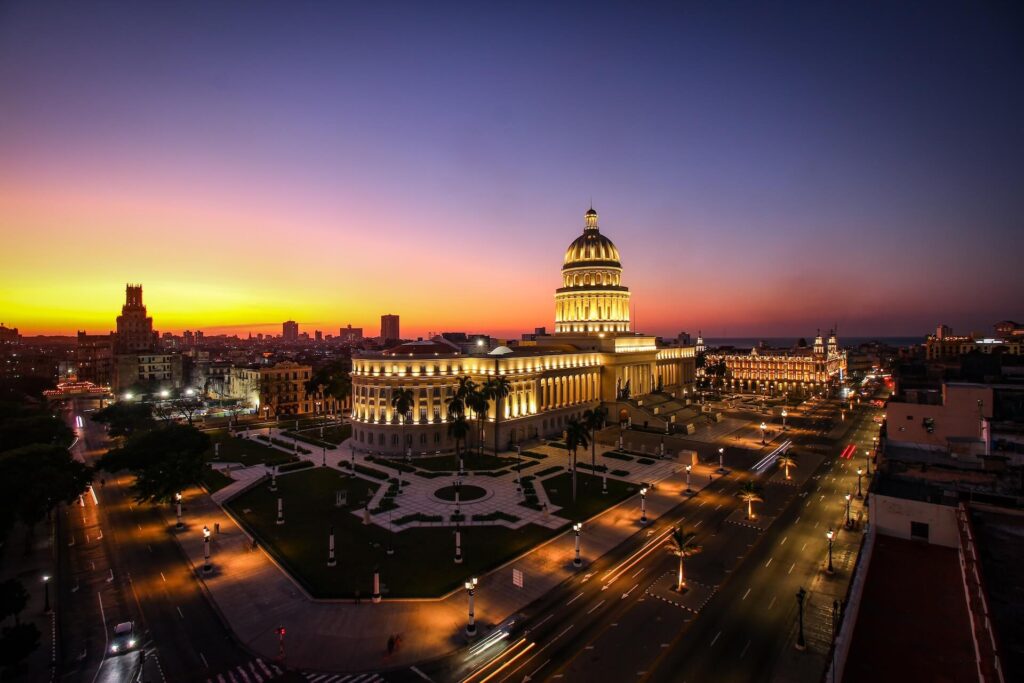
Vibrant Nightlife: Savoring the Salsa Rhythms
Havana comes alive at night, with its vibrant music scene and infectious salsa rhythms. From iconic dance clubs to intimate live music venues, there are endless opportunities to immerse yourself in Cuba’s rich musical heritage and dance the night away.
Exploring the Colorful Colonial Gem: Trinidad
Located on the southern coast of Cuba, Trinidad is a true gem that transports visitors back to the 16th century. With its well-preserved colonial architecture, which its famous for as well as colorful buildings lining its cobblestone streets. Exploring the town feels like stepping into a time capsule, where every corner reveals a piece of history waiting to be discovered.
Cultural Extravaganza: Festivals and Traditions
Trinidad’s vibrant cultural scene comes to life during its numerous festivals and celebrations. From the colorful Carnaval de Trinidad to the spiritual Santeria rituals, visitors have the opportunity to immerse themselves in Cuba’s rich cultural traditions.

The Charm of Santiago de Cuba
Situated on the eastern end of the island, Santiago de Cuba is a city brimming with soul, music, and revolutionary history.
Birthplace of Cuban Music: Santiago’s Vibrant Soul
Santiago de Cuba is known as the birthplace of Cuba’s most iconic musical genres, including son and salsa. Its streets echo with the sounds of music, and visitors can experience the vibrant cultural scene through live performances, street parties, and impromptu jam sessions.
Immersing in Revolutionary History
Santiago de Cuba played a significant role in Cuba’s revolutionary history, and remnants of this era can still be explored today. From the Moncada Barracks, where Fidel Castro launched the revolution, to the Santa Ifigenia Cemetery, which is the final resting place of revolutionary heroes, the city is a treasure trove for history enthusiasts.
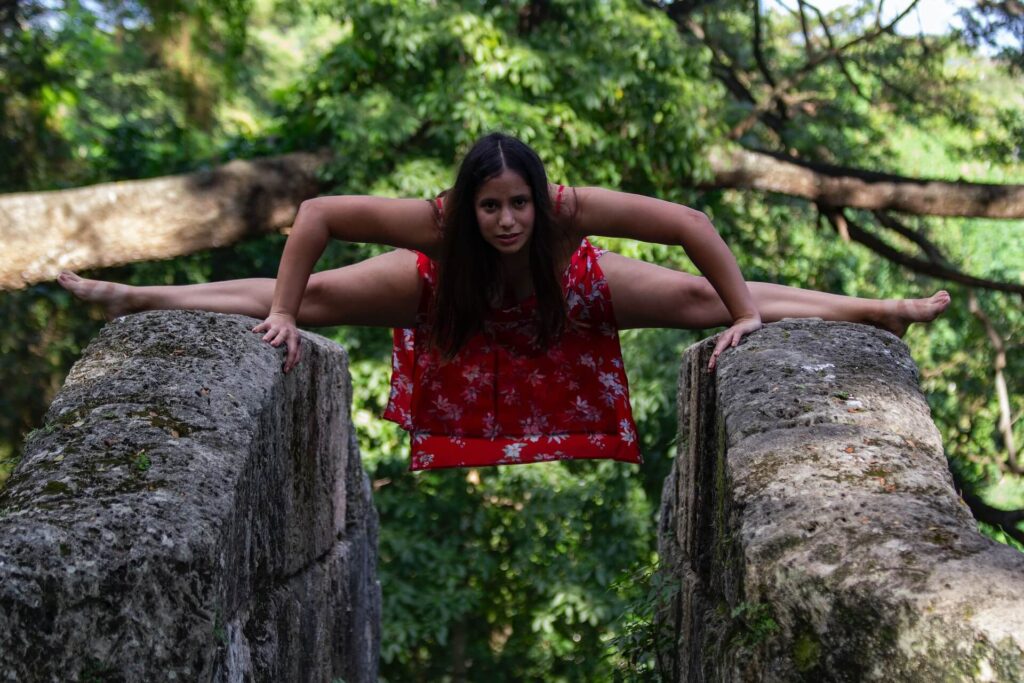
Other Captivating Cities Worth Exploring
While Havana, Trinidad, and Santiago de Cuba may steal the spotlight, Cuba is home to numerous other captivating cities that are worthy of exploration.
Varadero: Sun, Sand, and Crystal Waters
Located on the Hicacos Peninsula, Varadero is renowned for its pristine beaches, crystal-clear waters, and luxurious resorts. It offers the perfect setting for relaxation and tropical indulgence.
Cienfuegos: The Pearl of the South
Nestled along the Bay of Cienfuegos, this coastal town boasts a rich architectural heritage and a vibrant cultural scene. Its French influence is evident in its stunning neoclassical buildings, earning it the well-deserved title of “The Pearl of the South.”
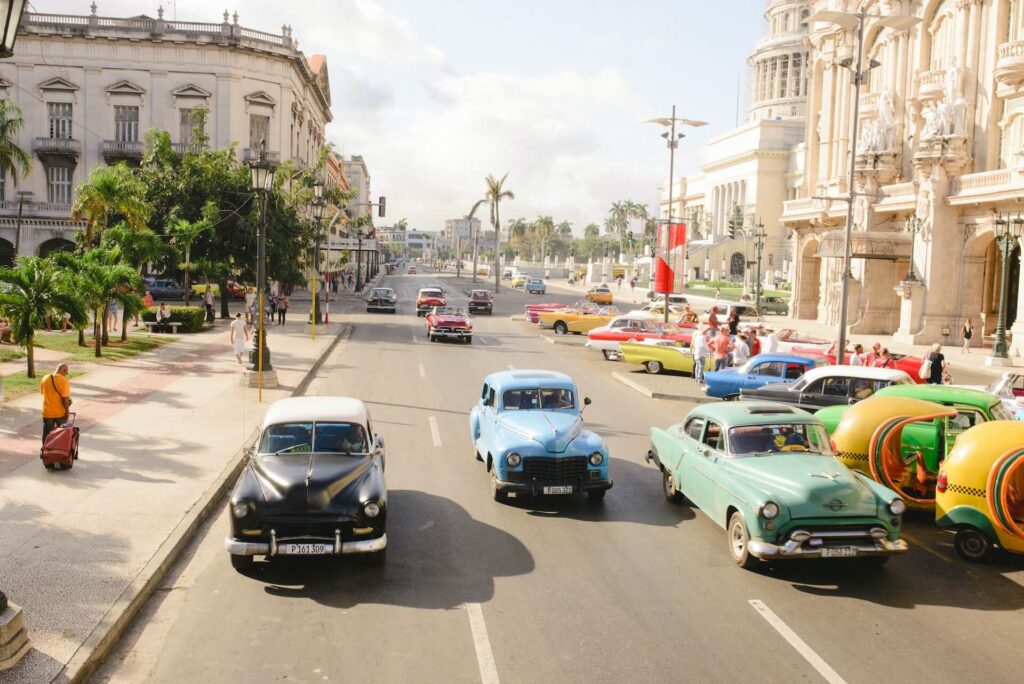
Immerse in Cuba’s Natural Wonders
Beyond its captivating cities, Cuba is a treasure trove of natural wonders, from idyllic beaches to breathtaking landscapes.
Escaping to Cayo Coco: Pristine Beaches and Wildlife
Located off the northern coast of Cuba, Cayo Coco offers a tropical paradise with its pristine white sandy beaches and crystal-clear turquoise waters. It is also home to an abundance of wildlife, making it a haven for nature lovers and beach enthusiasts alike.
Exploring the Viñales Valley’s Stunning Landscapes
Nestled in the western part of Cuba, the Viñales Valley is a UNESCO World Heritage Site renowned for its lush landscapes and unique mogotes, limestone formations that dot the countryside. This picturesque region offers visitors the opportunity to explore lush tobacco fields, visit traditional farms, and admire stunning natural vistas.
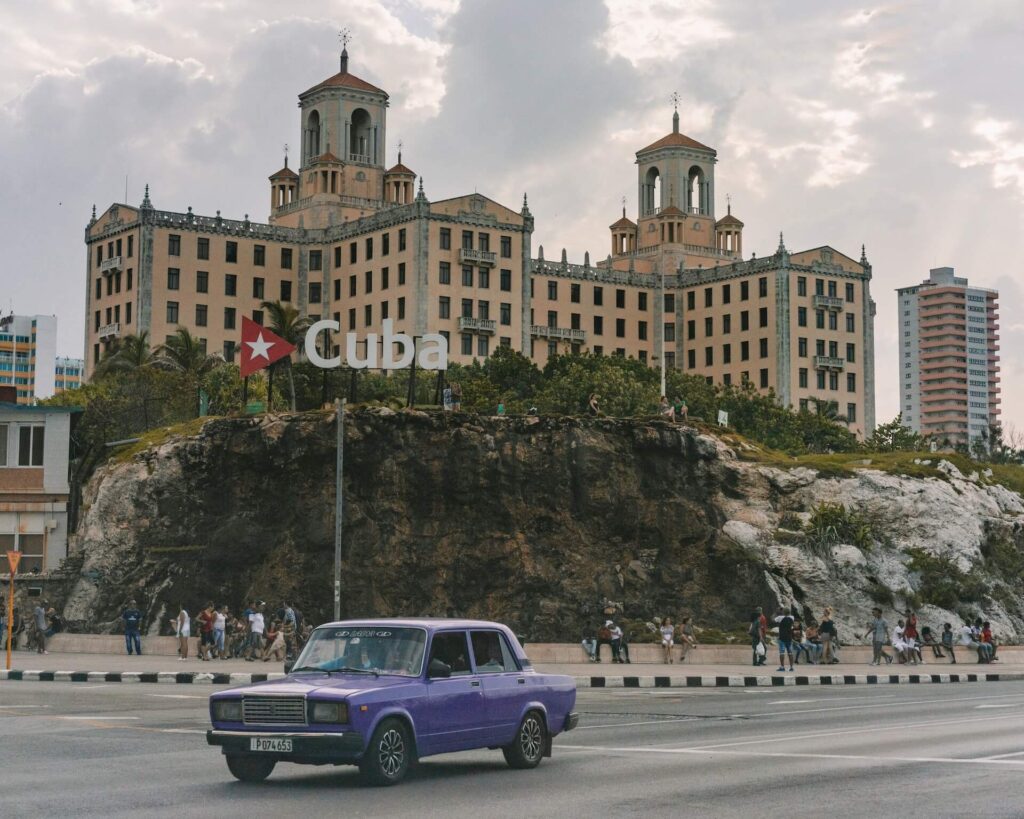
Adventure Awaits: Exploring the Topes de Collantes Natural Park
For those seeking an adrenaline rush and an escape into nature, the Topes de Collantes Natural Park is a must-visit destination. Located in the Escambray Mountains, this stunning park offers hiking trails, refreshing waterfalls, and breathtaking viewpoints.
Embark on Culinary Delights
A journey through Cuba is incomplete without indulging in its vibrant culinary scene, which is a fusion of flavors influenced by various cultures and traditions.
Unveiling the Essence of Cuban Cuisine
Cuban cuisine is a tantalizing blend of Spanish, African, and Caribbean influences. From succulent roasted pork to flavorful rice and beans, every dish tells a story and captures the essence of the island’s culture.
Paladares: A Glimpse into Private Restaurants
Paladares, privately-owned restaurants, offer a unique dining experience where visitors can savor authentic Cuban flavors while immersing themselves in the warmth and hospitality of Cuban families.
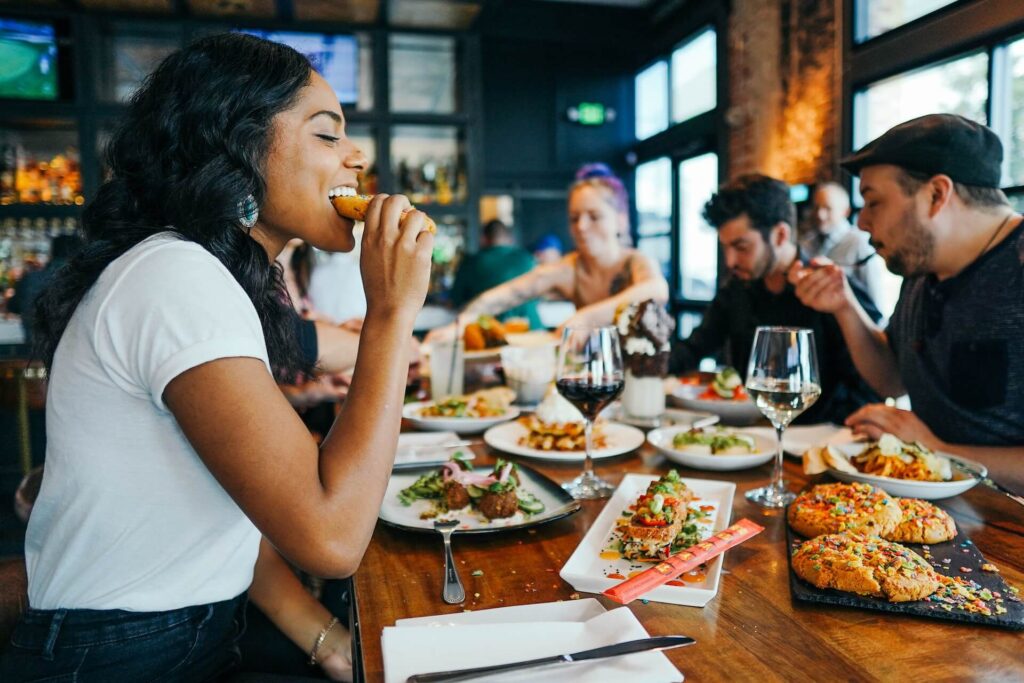
Must-Try Cuban Dishes Unique to Each Region
While Cuban cuisine is characterized by its signature dishes such as ropa vieja and moros y cristianos, each region of the island boasts its own culinary delights. Whether indulging in street food in Havana or savoring fresh seafood in Cienfuegos, exploring regional specialties is a gastronomic adventure in itself.
Art, Culture, and Museums
Cuba’s vibrant art scene and rich cultural heritage are evident throughout the island, from its architectural gems to its world-class museums.
Cuban Art Scene: From Classic to Contemporary
Cuba has a thriving art scene that encompasses a wide range of styles and influences. From classic paintings to contemporary installations, art lovers will find themselves captivated by the talent and creativity of Cuban artists.

Admiring Architectural Gems
Cuba showcases a remarkable collection of architectural gems, reflecting its vibrant history and diverse influences. From Spanish colonial structures to art deco masterpieces and modernist marvels, the island is a living museum of architectural excellence.
Museums Unveiling Cuba’s Rich Heritage
Cuba’s museums offer a glimpse into the island’s rich historical and cultural background. From the Museo Nacional de Bellas Artes, which houses an impressive collection of Cuban art, to the Museo de la Revolución, which chronicles the country’s revolutionary history, there are endless opportunities to delve deeper into the island’s heritage.
Experiencing the Iconic Cuban Cigars
Cuba’s world-famous cigars are a symbol of the island’s craftsmanship and heritage. Embark on a journey through the art of cigar-making and discover the allure of these iconic tobacco products.

The Art of Cigar-Making: A National Treasure
Cigar-making is a time-honored tradition in Cuba, and the island is renowned for producing some of the finest cigars in the world. From the cultivation of tobacco plants to the hands-on process of rolling cigars, witnessing the artistry behind these coveted products is an unforgettable experience.
Visiting Tobacco Plantations: Immersed in the Cultivation Process
To truly understand the journey of a cigar, a visit to a tobacco plantation is a must. Discover the intricate process of growing and harvesting tobacco leaves and gain insights into the farmers’ commitment to preserving the integrity of this revered crop.
Transportation: Getting Around Cuba
Navigating transportation within Cuba requires careful planning and consideration. Let’s explore the various transportation options available to US citizens visiting the island.
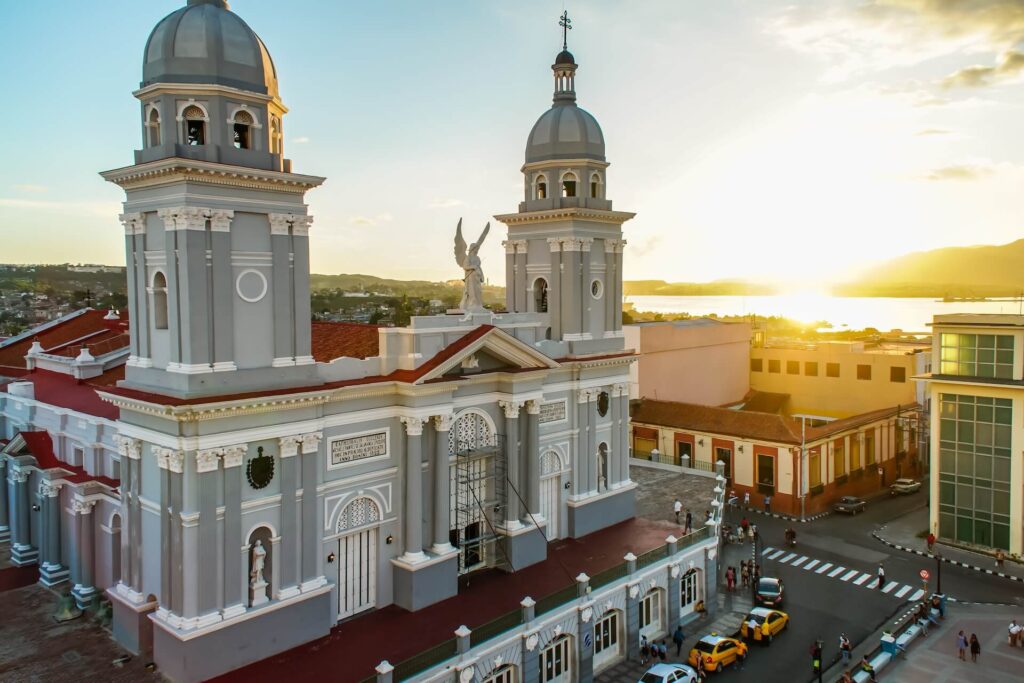
Navigating Public Transportation Systems
Cuba’s public transportation system offers a cost-effective means of getting around, with options including buses, shared taxis (known as “collectivos”), and trains. While it may require some patience and flexibility, utilizing public transportation provides an opportunity to immerse oneself in the local culture.
Renting a Car: Pros and Cons
Renting a car in Cuba provides the freedom to explore at your own pace and venture off the beaten path. However, it is essential to be aware of the challenges that come with it, such as limited availability and navigating complex road conditions.
The Iconic Vintage Cars: A Classic Cuban Ride
No visit to Cuba is complete without experiencing a ride in one of its iconic vintage cars. These lovingly restored automobiles are not only a unique form of transportation but also a nostalgic reminder of a bygone era.
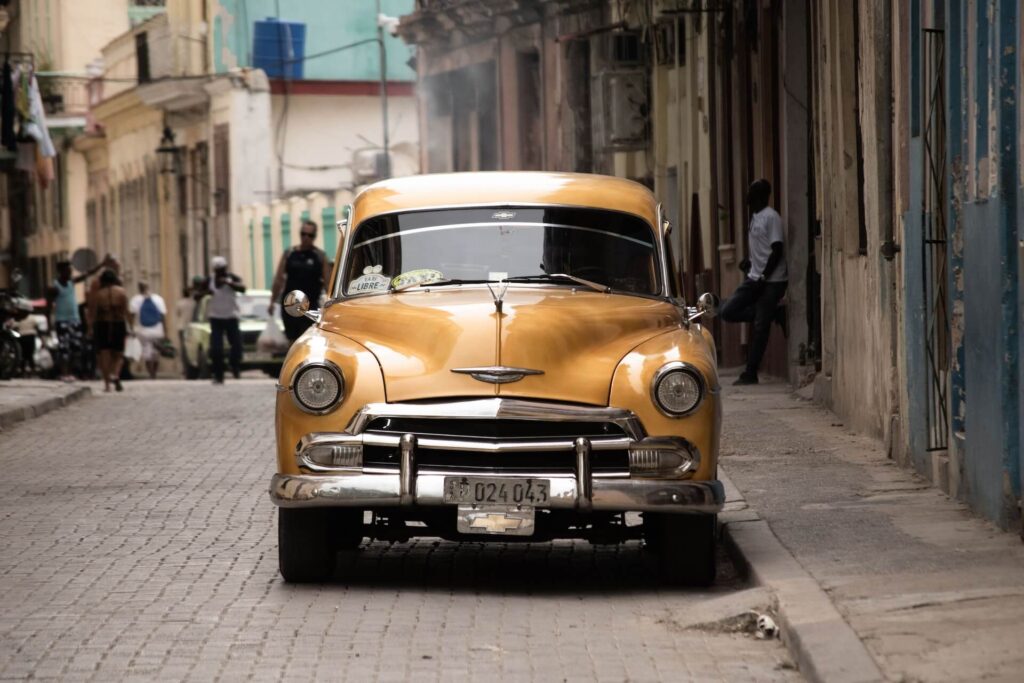
Accommodation Options
Cuba offers a wide range of accommodation options, catering to different budgets and preferences. Let’s explore the various choices available to US citizens visiting the island.
Luxurious Resorts and Hotels
For those seeking the ultimate pampering and relaxation, Cuba’s luxurious resorts and hotels provide a haven of comfort and indulgence. From beachfront resorts to historic boutique hotels, travelers can bask in the island’s warm hospitality while enjoying world-class amenities.
Casa Particulares: Staying with Cuban Families
Casa Particulares offer a more immersive and intimate experience, allowing visitors to stay with Cuban families in their private homes. This form of accommodation not only offers a unique insight into local life but also provides an opportunity to forge meaningful connections with the Cuban people.
Unique Accommodations: Eclectic Choices
For the adventurous and unconventional traveler, Cuba boasts a variety of unique accommodation options. From eco-lodges nestled in nature to converted colonial mansions and even scenic campsites, there is something to cater to every individual’s sense of adventure.
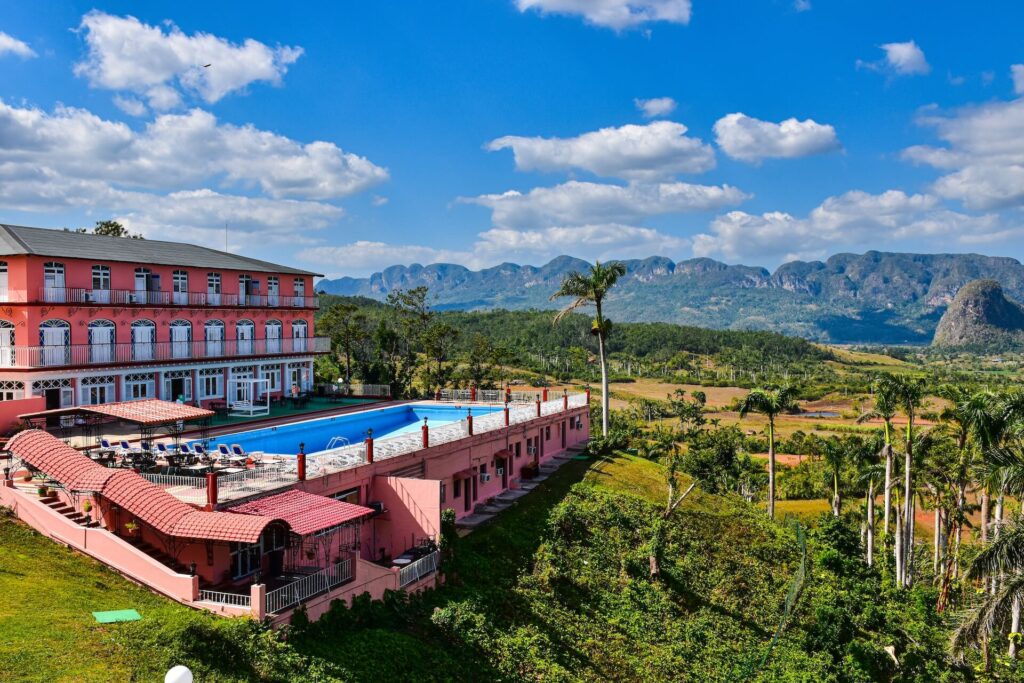
Safety & Practical Tips for US Travelers
While Cuba is generally a safe destination, it is important to be aware of local customs, ensure personal safety, and navigate the intricacies of the Cuban streets. Here are some tips to help US travelers make the most of their Cuban experience.
Understanding Local Customs and Etiquette
Cubans are friendly and welcoming people, but it is important to be mindful of local customs and etiquette. Learning a few basic phrases in Spanish and familiarizing oneself with the local culture will go a long way in creating positive interactions and fostering mutual respect.
Ensuring Personal Safety: Navigating Cuban Streets
As with any destination, it is essential to exercise caution and be aware of one’s surroundings while navigating the streets of Cuba. Petty theft and pickpocketing can occur in crowded areas, so it is advisable to keep valuables secure and be mindful of personal belongings.
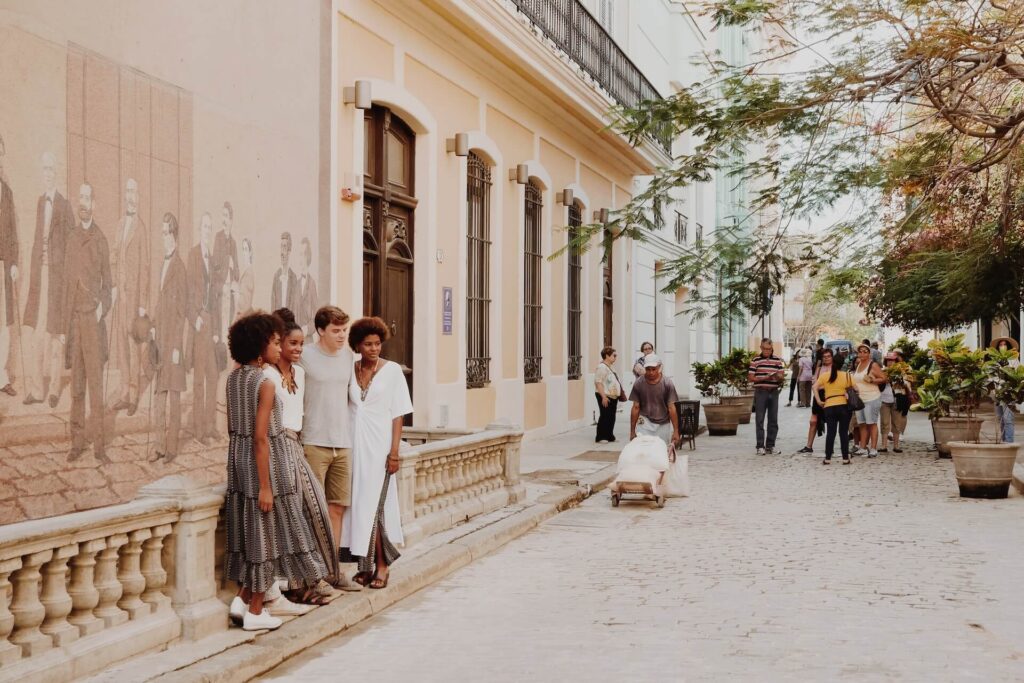
Currency Exchange and Banking Considerations
Cuba has its own currency system, with two types of currencies in circulation. US citizens should be prepared to exchange their US dollars into Cuban convertible pesos (CUC) or use other widely accepted currencies such as the Euro or Canadian dollar. It is advisable to bring sufficient cash for the duration of the trip, as credit and debit card usage may be limited.
Exploring Cuba’s Best-Kept Secrets
While popular destinations often steal the spotlight, Cuba is also home to hidden gems and off-the-beaten-path destinations that offer unique and unforgettable experiences.
Off-the-Beaten-Path Destinations
For those seeking a break from the well-trodden tourist path, Cuba offers a wealth of hidden treasures. From the charming coastal town of Baracoa to the secluded paradise of the Jardines del Rey archipelago, exploring these lesser-known destinations will reward travelers with incredible natural beauty and authentic encounters.

Hidden Gems of Cuban Architecture
While Havana’s iconic architecture often takes center stage, there are hidden gems scattered throughout the island that showcase Cuba’s architectural splendor. From the colonial town of Remedios to the picturesque Spanish colonial-style village of Camagüey, architectural enthusiasts will delight in uncovering these hidden gems.
Conclusion
It is clear to see that Cuba is an exotic island waiting to be explored, previously inaccessible due to immigration restrictions, but that has since been eased and its borders are now open to all and sundry. Whatever your guilty might be, be sure to find it on the island.
However, to embark on a trip to this destination, ensure that your documentation is up to date and you take the right vaccination before you get on the plane. Also, as the island is vast, you might want to seek the services of a tour guide to make your stay more pleasurable.
What do you think? Is Cuba a destination you might want to explore?
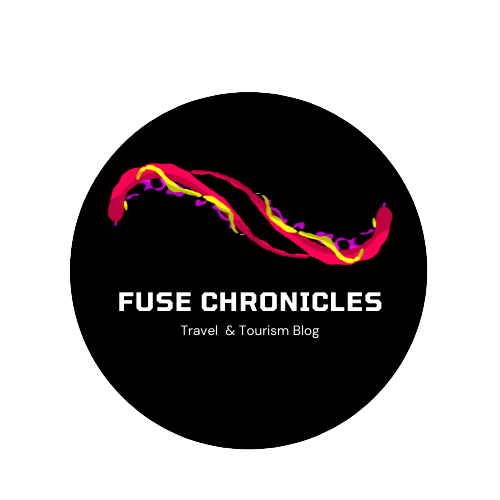
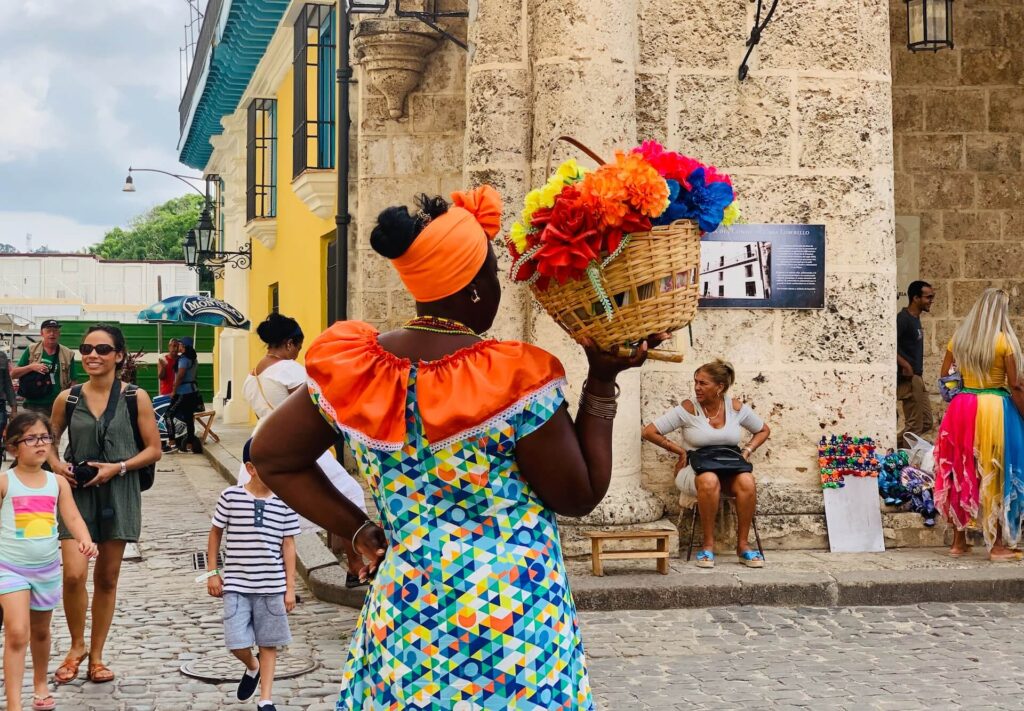










2 Responses